Filter by

5G Enabling Technologies and Wireless Networking
The ongoing deployment of 5G networks is a key enabler for realizing upcoming services at scale, including the massive deployment of the Internet of Things, providing communications to support autonomous vehicles, and supporting the realization of smart cities. However, as the limitations of existing approaches become apparent, the need for next-generation technologies is growing, in terms of i…
- Edition
- -
- ISBN/ISSN
- 9783036568065
- Collation
- -
- Series Title
- -
- Call Number
- -
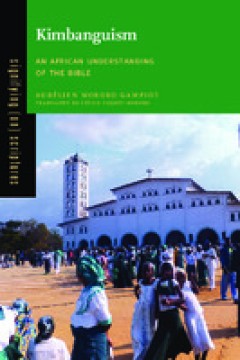
Kimbanguism: An African Understanding of the Bible
From the early days of Christianity in Sub-Saharan Africa, a Eurocentric view of Christian teaching was a primary tool in the subjugation and domination of native populations. Since 1921 Kimbanguism, an African Initiated Church, has advocated a reconstruction of Blackness by appropriating the parameters of Christian identity. The prophet Simon Kimbangu, the founder of the movement, has inspired…
- Edition
- Ed. 1
- ISBN/ISSN
- 9780271079707
- Collation
- -
- Series Title
- Signifying (on) Scriptures
- Call Number
- 290 MOK k
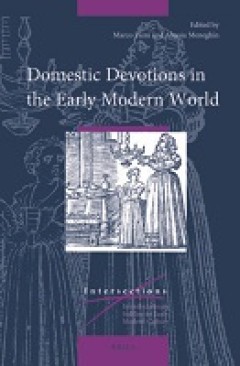
Domestic Devotions in the Early Modern World
This volume sets out to explore the world of domestic devotions and is premised on the assumption that the home was a central space of religious practice and experience throughout the early modern world. The contributions to this book, which deal with themes dating from the fifteenth to the eighteenth century, tell of the intimate relationship between humans and the sacred within the walls of t…
- Edition
- Ed. 1
- ISBN/ISSN
- 9789004375888
- Collation
- 378
- Series Title
- Intersections, 59/2
- Call Number
- 200 DOM d

An Epidemic among My People Religion, Politics, and COVID-19 in the United S…
The pandemic presented religion as a paradox: faith is often crucial for helping people weather life’s troubles and make difficult decisions, but how can religion continue to deliver these benefits and provide societal structure without social contact? The topical volume, An Epidemic among My People explains how the COVID-19 pandemic stress tested American religious communities and created a …
- Edition
- Ed. 1
- ISBN/ISSN
- 9781439923399, 9781439923405
- Collation
- -
- Series Title
- -
- Call Number
- 200.2 EPI e
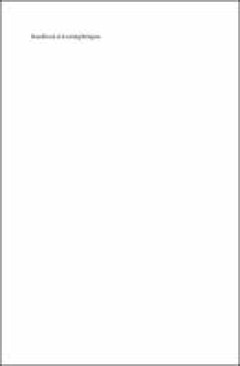
Handbook of Leaving Religion
The Handbook of Leaving Religion introduces a neglected field of research with the aim to outline previous and contemporary research, and suggest how the topic of leaving religion should be studied in the future. The handbook consists of three sections covering: 1) Major debates about leaving religion; 2) Case studies and empirical insights; and 3) Theoretical and methodological approaches. Sec…
- Edition
- Ed. 1
- ISBN/ISSN
- 9789004331471
- Collation
- -
- Series Title
- -
- Call Number
- 200.2 HAN h
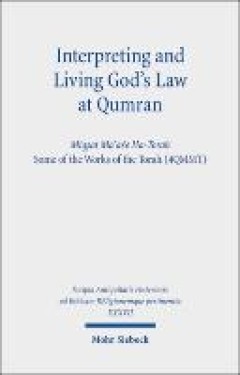
Interpreting and Living God's Law at Qumran: Migsat Ma'ase Ha-Torah, Some of …
The text Miq?at Ma?a?e Ha-Torah, Some of the Works of the Torah (4QMMT), is one of the most interesting texts among the famous Dead Sea Scrolls discovered near the settlement of Khirbet Qumran and its vicinity in the middle of the twentieth century and by now published in full. It is a writing in the form of a letter by an unknown author to an equally unknown addressee, written in second person…
- Edition
- Ed. 1
- ISBN/ISSN
- 9783161553059, 9783161597060
- Collation
- -
- Series Title
- -
- Call Number
- 200.2 INT i
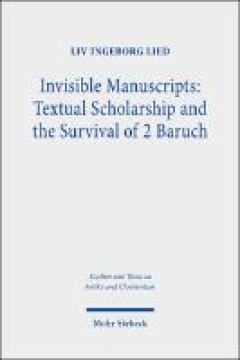
Invisible Manuscripts: Textual Scholarship and the Survival of 2 Baruch
In this critical exploration of the role of manuscripts in textual scholarship, Liv Ingeborg Lied studies the Syriac manuscript transmission of 2 Baruch. These manuscripts emerge as salient sources to the long life of 2 Baruch among Syriac speaking Christians, not merely witnesses to an early Jewish text. Inspired by the perspective of New Philology, Lied addresses manuscript materiality and pa…
- Edition
- -
- ISBN/ISSN
- 9783161606731
- Collation
- -
- Series Title
- -
- Call Number
- -
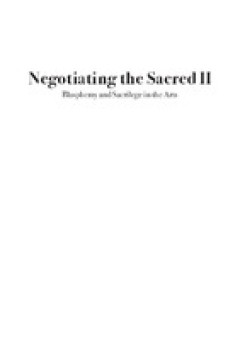
Negotiating the Sacred II: Blasphemy and Sacrilege in the Arts
Blasphemy and other forms of blatant disrespect to religious beliefs have the capacity to create significant civil and even international unrest. Consequently, the sacrosanctity of religious dogmas and beliefs, stringent laws of repression and codes of moral and ethical propriety have compelled artists to live and create with occupational hazards like uncertain audience response, self-censorshi…
- Edition
- Ed. 1
- ISBN/ISSN
- -
- Collation
- 210
- Series Title
- -
- Call Number
- 291.1 BUR n
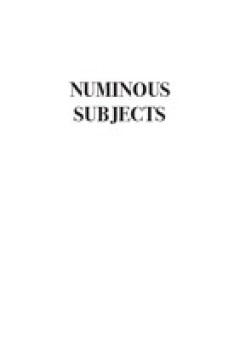
Numinous Subjects: Engendering the Sacred in Western Culture, An Essay
Part religious studies, part feminist theory, part philosophy, part indescribable: such is Numinous Subjects. Described by the author as ‘a kaleidoscopic exploration of why three gendered figures of the sacred matter within western culture,’ the experience of reading this text truly is akin to gazing through a constantly turning kaleidoscope. Images, concepts, phrases and quotes are continu…
- Edition
- -
- ISBN/ISSN
- -
- Collation
- -
- Series Title
- -
- Call Number
- -
 Computer Science, Information & General Works
Computer Science, Information & General Works  Philosophy & Psychology
Philosophy & Psychology  Religion
Religion  Social Sciences
Social Sciences  Language
Language  Pure Science
Pure Science  Applied Sciences
Applied Sciences  Art & Recreation
Art & Recreation  Literature
Literature  History & Geography
History & Geography